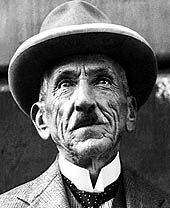| |||||||||||||||||||||||||||||||
All 74 seats of the House of Representatives 38 seats were needed for a majority in the House 19 (of the 36) seats of the Senate | |||||||||||||||||||||||||||||||
|---|---|---|---|---|---|---|---|---|---|---|---|---|---|---|---|---|---|---|---|---|---|---|---|---|---|---|---|---|---|---|---|
| |||||||||||||||||||||||||||||||
| |||||||||||||||||||||||||||||||
Federal elections were held in Australia on 23 October 1937. All 74 seats in the House of Representatives, and 19 of the 36 seats in the Senate were up for election. The incumbent UAP–Country coalition government, led by Prime Minister Joseph Lyons, defeated the opposition Labor Party under John Curtin.

Elections in Australia take place periodically to elect the legislature of the Commonwealth of Australia, as well as for each Australian state and territory. Elections in all jurisdictions follow similar principles, though there are minor variations between them. The elections for the Australian Parliament are held under the federal electoral system, which is uniform throughout the country, and the elections for state and territory Parliaments are held under the electoral system of each state and territory.

The House of Representatives is the lower house of the bicameral Parliament of Australia, the upper house being the Senate. Its composition and powers are established in Chapter I of the Constitution of Australia.

The Senate is the upper house of the bicameral Parliament of Australia, the lower house being the House of Representatives. The composition and powers of the Senate are established in Chapter I of the Constitution of Australia. There are a total of 76 Senators: 12 are elected from each of the six states regardless of population and 2 from each of the two autonomous internal territories. Senators are popularly elected under the single transferable vote system of proportional representation.
Contents
- Results
- House of Representatives
- Senate
- Seats changing hands
- See also
- Notes
- References
- External links
The election is notable in that the Country Party achieved its highest-ever primary vote in the lower house, thereby winning nearly a quarter of all lower-house seats. At the 1934 election nine seats in New South Wales had been won by Lang Labor. Following the reunion of the two Labor parties in February 1936, these were held by their members as ALP seats at the 1937 election. With the party's wins in Ballaarat and Gwydir (initially at a by-election on 8 March 1937), the ALP had a net gain of 11 seats compared with the previous election.
The National Party of Australia is an Australian political party. Traditionally representing graziers, farmers, and rural voters generally, it began as the Australian Country Party in 1920 at a federal level. It would later briefly adopt the name National Country Party in 1975, before adopting its current name in 1982.

New South Wales is a state on the east coast of Australia. It borders Queensland to the north, Victoria to the south, and South Australia to the west. Its coast borders the Tasman Sea to the east. The Australian Capital Territory is an enclave within the state. New South Wales' state capital is Sydney, which is also Australia's most populous city. In March 2018, the population of New South Wales was over 7.9 million, making it Australia's most populous state. Just under two-thirds of the state's population, 5.1 million, live in the Greater Sydney area. Inhabitants of New South Wales are referred to as New South Welshmen.
This was the first federal election that future Prime Ministers Harold Holt and Arthur Fadden contested as members of parliament, having entered parliament at the 1935 Fawkner by-election and 1936 Darling Downs by-election respectively.

Harold Edward Holt,, was an Australian politician who served as the 17th Prime Minister of Australia, in office from 1966 until his presumed drowning death in 1967. He was the leader of the Liberal Party during that time.

Sir Arthur William Fadden, was an Australian politician who served as Prime Minister of Australia from 29 August to 7 October 1941. He was the leader of the Country Party from 1940 to 1958.















